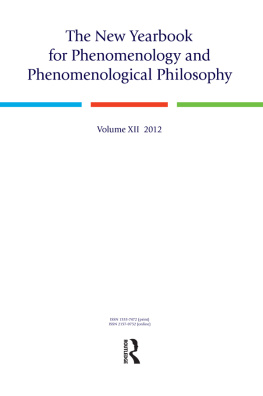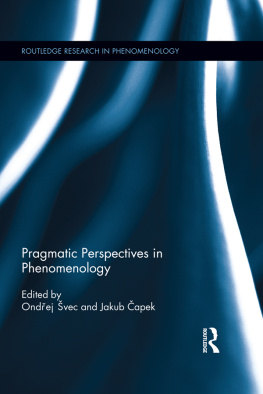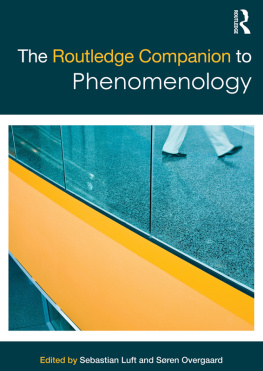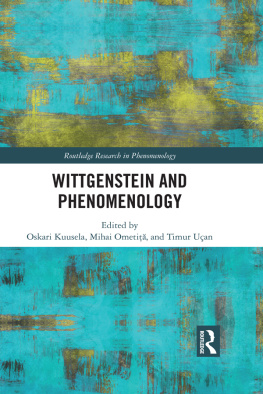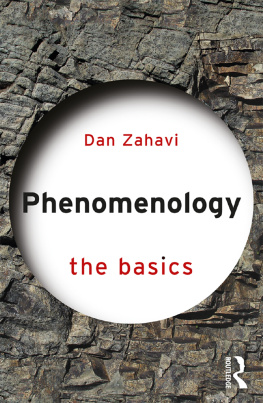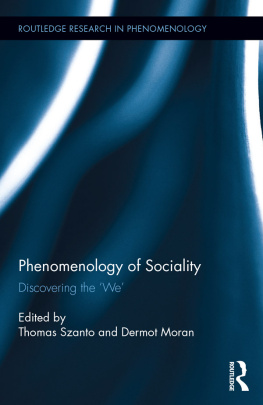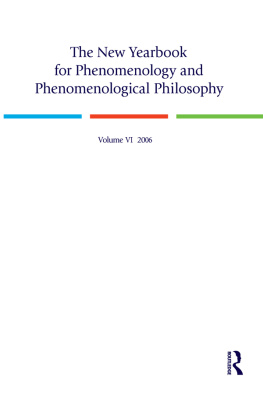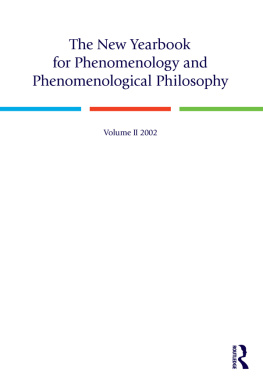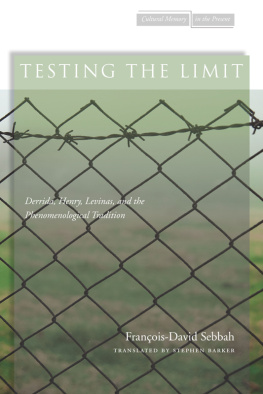The New Yearbook for Phenomenology and Phenomenological Philosophy
First published 2013 by Acumen
Published 2014 by Routledge
2 Park Square, Milton Park, Abingdon, Oxon OX14 4RN
711 Third Avenue, New York, NY 10017, USA
Routledge is an imprint of the Taylor & Francis Group, an informa business
General Editors
Burt Hopkins, Seattle University, United States
John J. Drummond, Fordham University, United States
Founding Co-Editor
Steven Crowell, Rice University, United States
Contributing Editors
Marcus Brainard, London, United Kingdom
Ronald Bruzina, University of Kentucky, United States
Algis Mickunas, Ohio University, United States
Thomas Seebohm, Bonn, Germany
Thomas Sheehan, Stanford University, United States
Consulting Editors
Patrick Burke (Gonzaga University, Italy), Ivo de Gennaro (University of Bozen-Bolzano, Italy), Nicholas de Warren (University of Leuven, Belgium), James Dodd (The New School, United States), R. O. Elveton (Carleton College, United States), Parvis Emad (DePaul University, (Emeritus), United States), James G. Hart (Indiana University, United States), Nam-In Lee (Seoul National University, Korea, Republic Of), Christian Lotz (Michigan State University, United States), Claudio Majolino (University of Lille, France), Dermot Moran (University College Dublin, Ireland), James Risser (Seattle University, United States), Michael Shim (California State University, Los Angeles, United States), Andrea Staiti (Boston College, United States), Panos Theodorou (University of Crete, Greece), Friedrich Wilhelm von Herrmann (University of Freiburg, Germany), Olav K. Wiegand (University of Mainz, Germany), Dan Zahavi (University of Copenhagen, Denmark), Andrea Zhok (University of Milan, Italy)
The New Yearbook for Phenomenology and Phenomenological Philosophy is currently covered by the following Indexing, abstracting and full-text services: Philosophy Research Index, International Philosophical Bibliography, The Philosophers Index.
The views and opinions expressed in The New Yearbook for Phenomenology and Phenomenological Philosophy are those of the authors and do not necessarily reflect the views of the editorial board except where otherwise stated.
Copyright under the Berne Convention. No reproduction without permission.
Copyright 2013, Taylor & Francis.
ISSN 1533-7472 (print) ISSN 2157-0752 (online)
All rights reserved. No part of this book may be reprinted or reproduced or utilised in any form or by any electronic, mechanical, or other means, now known or hereafter invented, including photocopying and recording, or in any information storage or retrieval system, without permission in writing from the publishers.
ISBN 13: 978-1-84465-541-0 (pbk)
Jeremy H. Smith
Otterbein University
JHSmith@otterbein.edu
Abstract: This article explicates the unified argument of James G. Harts 1200 page work Who One Is . Hart begins with an exploration of the non-objective self as propertyless ipseity; then relates that sheer ipseity to the concrete development a self; and then, that self to the ideal self which guides its development; and finally, the ideal self to God as its origin. Hart also shows the relevance of Jaspers notion of Existenz at each of these stages. The uniqueness and mineness of any I cannot be a matter of properties. Each I is a unique haecceity for which multiple instantiation would be meaningless. Hart concludes with a fully developed theology of selfhood according to which Gods creation of the haecceities is an act of sheer generosity.
Keywords: self, ipseity, haecceity, Existenz, phenomenological theology, James G. Hart
This essay pulls together, explains, and evaluates the overall argument of James Harts two-volume work Who One Is . Harts work is path-breaking for four reasons: it represents an extremely detailed and rigorous re-visioning of Husserlian phenomenology in the light of Michel Henrys philosophy of non-objective self-awareness; in that context, it develops a new Husserlian ethics; with that ethics as a starting point, it integrates Christianspecifically Thomistictheology with phenomenology; and finally, it does all of this in dialogue with multiple traditions. Indeed, Harts comprehensive engagement with competing perspectives is an essential aspect of his achievement, and one which deserves to lead to greater engagement in such dialogue on the part of the wider philosophical world.
The aim of Harts project is to work out the implications of the notion of self as non-objective ipseity for ethics and theology. Those implications respond to three fundamental questions: (1) What does it mean for the self to be non-objective and for I reference to be necessarily non-sortal? (2) How does this understanding of self impact our understanding of conscience and the ideal self? (3) And, given this interpretation, how are we to understand the relationship of the ideal self to God? In this essay I will attempt to show how Hart answers each of these questions, and how his account coherently and convincingly interrelates non-objective ipseity, the ideal self, and God.
The Non-Objective Self as Propertyless Ipseity
What does it mean to be a self and to experience oneself? This is the central question Hart addresses throughout both volumes of Who One Is. Self can be taken in many senses. Self may mean personality, and personality may mean a set of traits. But self has a deeper meaning: that which has the personality or the traits and that to which the world appears. How does self in this deepest sense experience itself, and what does it mean for there to be self in this deepest sense? Hart argues that self-knowledge must come from the first-person perspective. In particular, the third-person perspective cannot replace or completely account for that which we know through the first-person perspective. What do we know from the first-person perspective? We know the world as it appears from that perspective. We know the acts we engage in as we know the world from that perspective. And we know those acts pre-reflectively as well as reflectively. We know our life: our own current of lived experience, of mood, and feeling. We know our bodies both objectively and pre-objectively: as that which we can see, and as that by which we perceive the world and act upon it. But, in regard to all this, Hart asks:
Thus if we take the route of knowing myself and mine through identification of properties or activities we must ask, how do I know that the mental states or acts of consciousness are mine or about me, or how are activities mine , unless I know that the self having these states or doing these things is myself? What makes me to be me and mine to be mine ? Are there some signature properties or descriptions that signify me and make them clearly mine ?
Hart points out that there is no objective property that my lived feelings, my perceptions, or my acts possess by reference to which we know that they are all mine. Beyond even that, there is no criterion that one may apply to determine whether I am an I ; this is a primitive datum, and immediately apprehended I know directly, immediately, and prereflectively, simply by living through my own self-experience, that I am I and that these experiences are mine. Hart also shows clearly that this form of prereflective self-experience is infallible. I may mistakenly identify a manikin as a person, or one person as another, and certainly I may be mistaken about the thoughts that belong to another. But I cannot be mistaken in my prereflective self-experience as I, and in my reference to myself as I in making first-person statements, And my direct, prereflective first-person experience is the inescapably necessary basis of my knowledge of myself as myself and of my life as my life. One does not know oneself as being oneself, and that which belongs to oneself as belonging to oneself, through the objective identification of any property.

